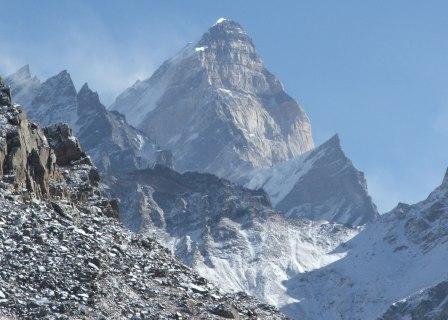CHR News Desk | New Delhi
As the world grapples with the escalating crisis of climate change, a comprehensive study on the impact of climate change in the Himalayan region has revealed alarming trends regarding the state of glaciers along the formidable Pir Panjal range, emphasizing the urgent need for decisive action to address the crisis.
Led by researchers Mohammad Ashraf Ganai and Syed Qaiser from the National Institute of Technology, the study’s findings shed light on the accelerating pace of glacier retreat and its far-reaching implications.
The study, published in the prestigious International Journal of Hydrology Science and Technology, has provided fresh insights into the profound impact of this global phenomenon on the fragile ecosystems of the Himalayan region.
Over the past four decades, a staggering 122 glaciers within the Pir Panjal range have experienced significant shrinkage, with their combined area diminishing from approximately 25.7 square kilometers to a mere 15.9 square kilometers.
One of the most concerning aspects highlighted by the research is the disproportionate impact of melting on glaciers facing south compared to those facing north. This asymmetrical melting pattern underscores the complex interplay between climate factors and geographical orientation in shaping glacier dynamics.
Furthermore, the study identifies altitude as a critical determinant of glacier vulnerability, with glaciers situated at higher elevations—typically between 3,800 to 4,000 meters above sea level—experiencing more pronounced melting than their lower-altitude counterparts. This phenomenon underscores the heightened sensitivity of high-altitude ecosystems to climate change-induced stressors.
The implications of glacier retreat extend beyond environmental concerns, with profound socio-economic ramifications for communities dependent on glacier-fed water sources. As glaciers serve as vital reservoirs for freshwater supply, their rapid depletion threatens to exacerbate water scarcity, particularly during the dry season, thereby jeopardizing agricultural productivity and livelihood security for millions of people.
The study, spanning four decades from 1980 to 2020, aimed to investigate watershed-wise glacier inventory, observational changes, and topographic influences on glaciers within the Pir Panjal range of the Kashmir basin. Analyzing data for 122 glaciers ranging in size from 0.01 km^2 to 0.96 km^2, the researchers observed a concerning trend of diminishing glacier area, from 25.74 km^2 in 1980 to 15.91 km^2 in 2020—a staggering loss of 9.83 km^2. Notably, the Vishaw watershed, hosting the highest number of glaciers at 55, witnessed the most significant glacier loss, exceeding 6.1 km^2.
The study also revealed the pivotal role of topography in influencing glacier recession rates. Smaller glaciers, measuring ≤ 0.5 km^2, exhibited a faster rate of recession—approximately 38.89%—compared to larger glaciers. Furthermore, south-facing glaciers and those at higher altitudes (> 3,800 meters above sea level) experienced more pronounced melting, highlighting the complex interplay between climate factors and geographical orientation.
Moreover, the heightened risk of glacial lake outburst floods (GLOFs) looms large as a direct consequence of glacier retreat. The potential release of vast quantities of water stored in glacial lakes poses a grave threat to downstream communities, with the potential for widespread devastation and loss of life.
Against this backdrop, the urgency of addressing the climate crisis in the Himalayan region cannot be overstated. The study’s findings underscore the need for immediate and concerted action to mitigate greenhouse gas emissions, preserve fragile mountain ecosystems, and implement robust adaptation measures to safeguard vulnerable communities.
As global temperatures continue to rise and glaciers recede at unprecedented rates, the window of opportunity for effective intervention is rapidly narrowing. Failure to act decisively risks irreversible damage to the delicate ecological balance of the Himalayas and the livelihoods of millions who depend on its resources.
In light of these sobering realities, the study serves as a clarion call for policymakers, stakeholders, and the international community to redouble their efforts in combating climate change and ensuring a sustainable future for generations to come.
The implications of glacier retreat extend beyond environmental concerns, with profound socio-economic ramifications for communities reliant on glacier-fed water sources. With glaciers serving as crucial reservoirs for freshwater supply, their rapid depletion poses a dire threat to water security, particularly during the dry season, jeopardizing agricultural productivity and livelihoods for millions.
In response to these alarming findings, experts emphasize the urgent need for immediate and concerted action to mitigate greenhouse gas emissions, preserve fragile mountain ecosystems, and implement robust adaptation measures. Failure to act decisively risks irreversible damage to the delicate ecological balance of the Himalayas and the livelihoods of millions who depend on its resources.




